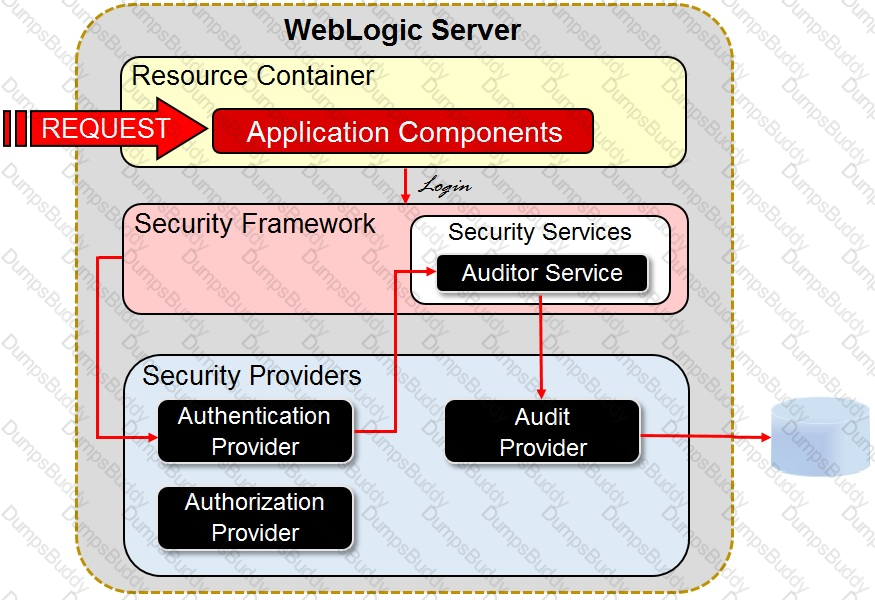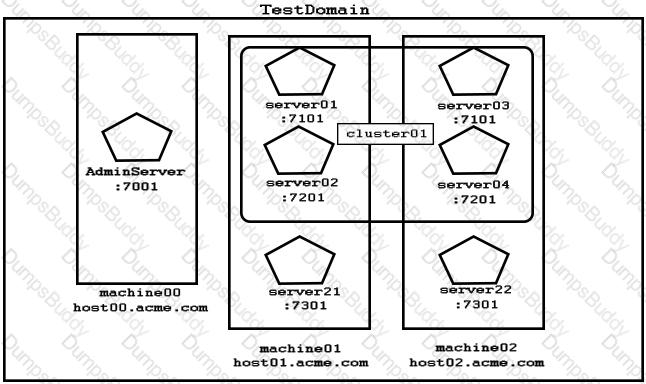1z0-134 Oracle WebLogic Server 12c: Advanced Administrator II Questions and Answers
One server in your WebLogic domain is experiencing a problem. You want to use the WebLogic Diagnostic Framework (WLDF) to diagnose the problem. The default built-in WLDF module is currently configured on the server, but it does not capture the metrics you need.
You have the following requirements:
- You do not want to delete the existing module.
- You want to minimize metric data output while troubleshooting the issue.
- You want to focus your analysis on only the server that is experiencing the problem.
What WLDF configuration would achieve this result? (Choose the best answer.)
You are creating a new domain with WLST.
Identify three parameters that can be customized with the setOption command. (Choose three.)
You have enabled JMS Diagnostic Logging and are analyzing JMS Message delivery and acknowledgment using the generated log entries. For this purpose, you are tracking individual message IDs.
What is the default format of the message ID that you would expect to see in the log? (Choose the best answer.)
Your application includes a message driven bean (MDB) that is listening to messages on a JMS Queue. You need to ensure that every message is processed exactly once by the MDB.
Which configuration allows you to achieve this requirement? (Choose the best answer.)
On a WebLogic Managed Server you administer, you have the following log:

You investigate and find a Web Module named MyApp with the following deployment descriptor weblogic.xml:

Which two are true? (Choose two.)
A client application asynchronously receives the message sent to a JMS Queue. The client is going to send a response to the sender.
Which two JMS Header fields from the original message are used to send the response? (Choose two.)
Which three considerations do you need to keep in mind while configuring a JMS file store in order to ensure the highest possible performance? (Choose three.)
We find the JMSRedelivered header set for a particular message on the receiver.
In which two scenarios is this expected to happen? (Choose two.)
My domain consists of an administration server and two managed servers. During runtime, my administration server has crashed and I wish to start the managed servers in MSI mode.
Which two files need to be copied from the admin server to the managed servers when starting them in this mode? (Choose two.)
You have defined Uniform Distributed Destination (UDD) topics targeted to multiple JMS servers.
Which three statements are correct about UDDs? (Choose three.)
You have a multithreaded application that looks up the WebLogic JMS ConnectionFactory object from the JNDI tree.
Which statement is correct in this scenario? (Choose the best answer.)
Review this scenario of an application running on a storage-disabled, managed Coherence server that uses a Coherence two-tier near cache:
- Cache data is already written to the distributed cache.
- There is a local near cache configured on the application side (storage-disabled node).
- Application requests the data from Coherence twice.
Assuming this is the server’s first access of this data from the cache, how many network round trips between Coherence cluster instances take place in total? (Choose the best answer.)
Review the image below. It depicts the architecture for the WebLogic Server auditing.

Where in the architecture does WebLogic apply audit configuration parameters that determine if an audit message is logged? (Choose the best answer.)
Examine the domain diagram:

What is the correct path within the configuration hierarchy to the MBean that contains the log rotation parameters for server04? (Choose the best answer.)
You are managing a WebLogic domain that has the default built-in diagnostic module configured for each server in the domain.
You have the following requirements:
- You want to capture metrics that are not collected by any of the built-in diagnostic modules.
- You want to continue capturing the metrics that are already captured by the existing built-in module.
- You want your configuration to persist after the server is restarted.
What are two approaches you can apply to achieve this result? (Choose two.)


